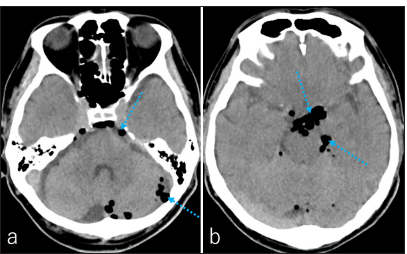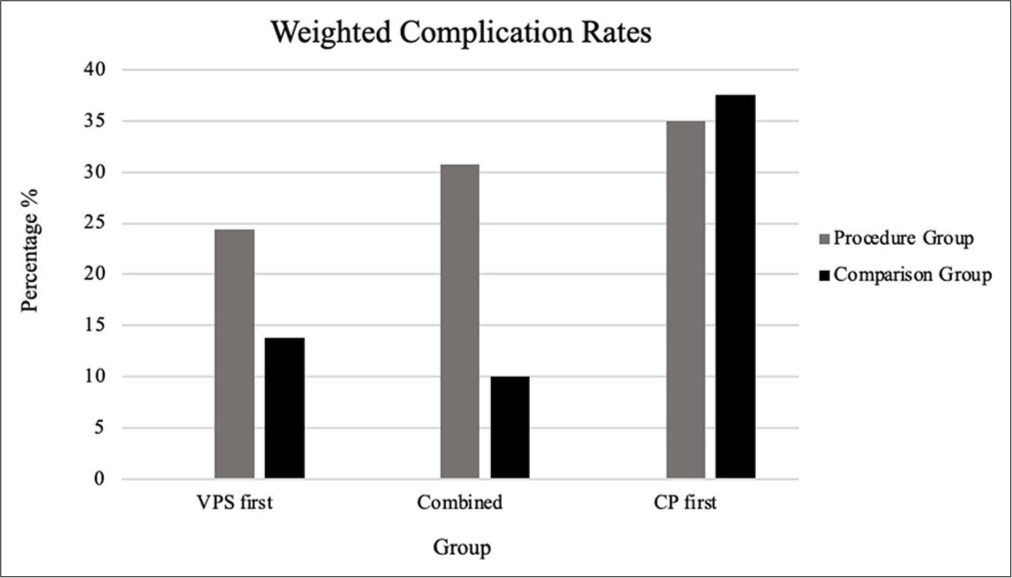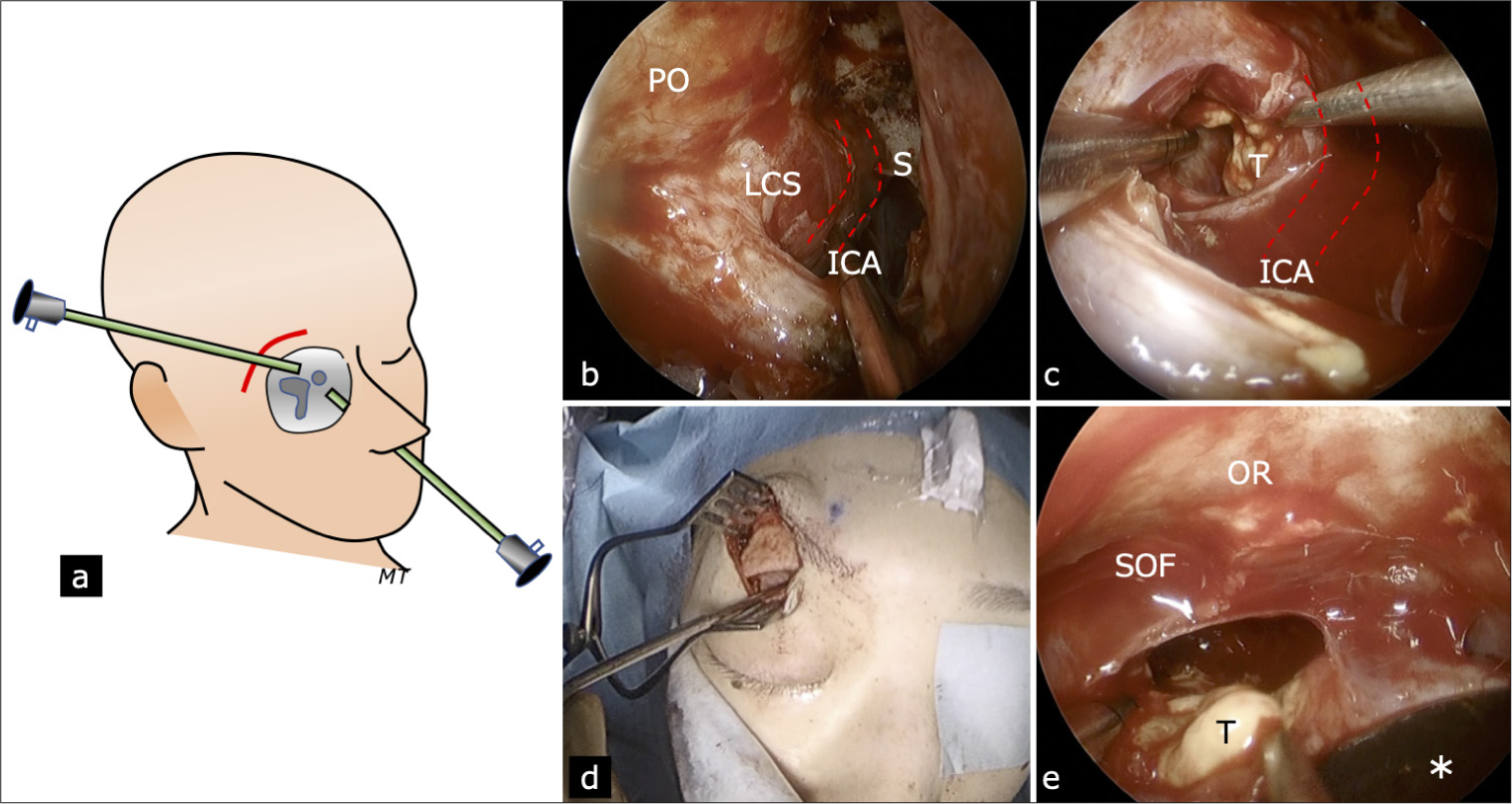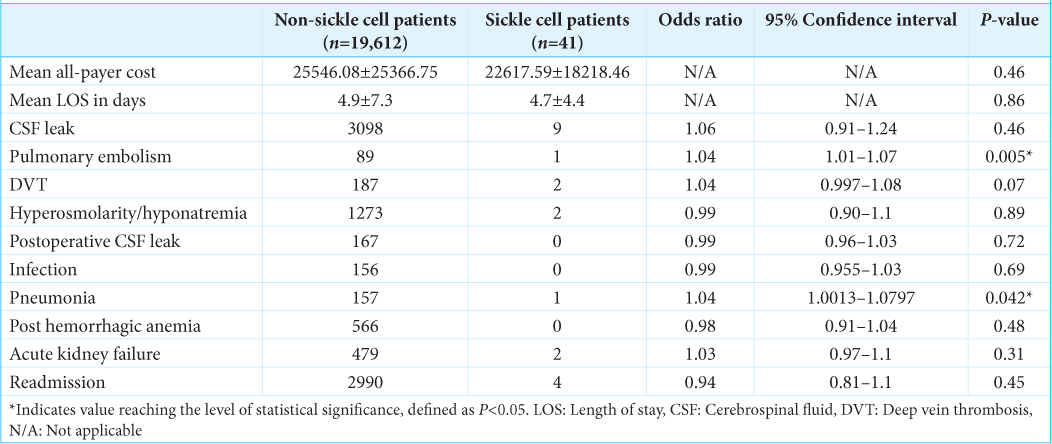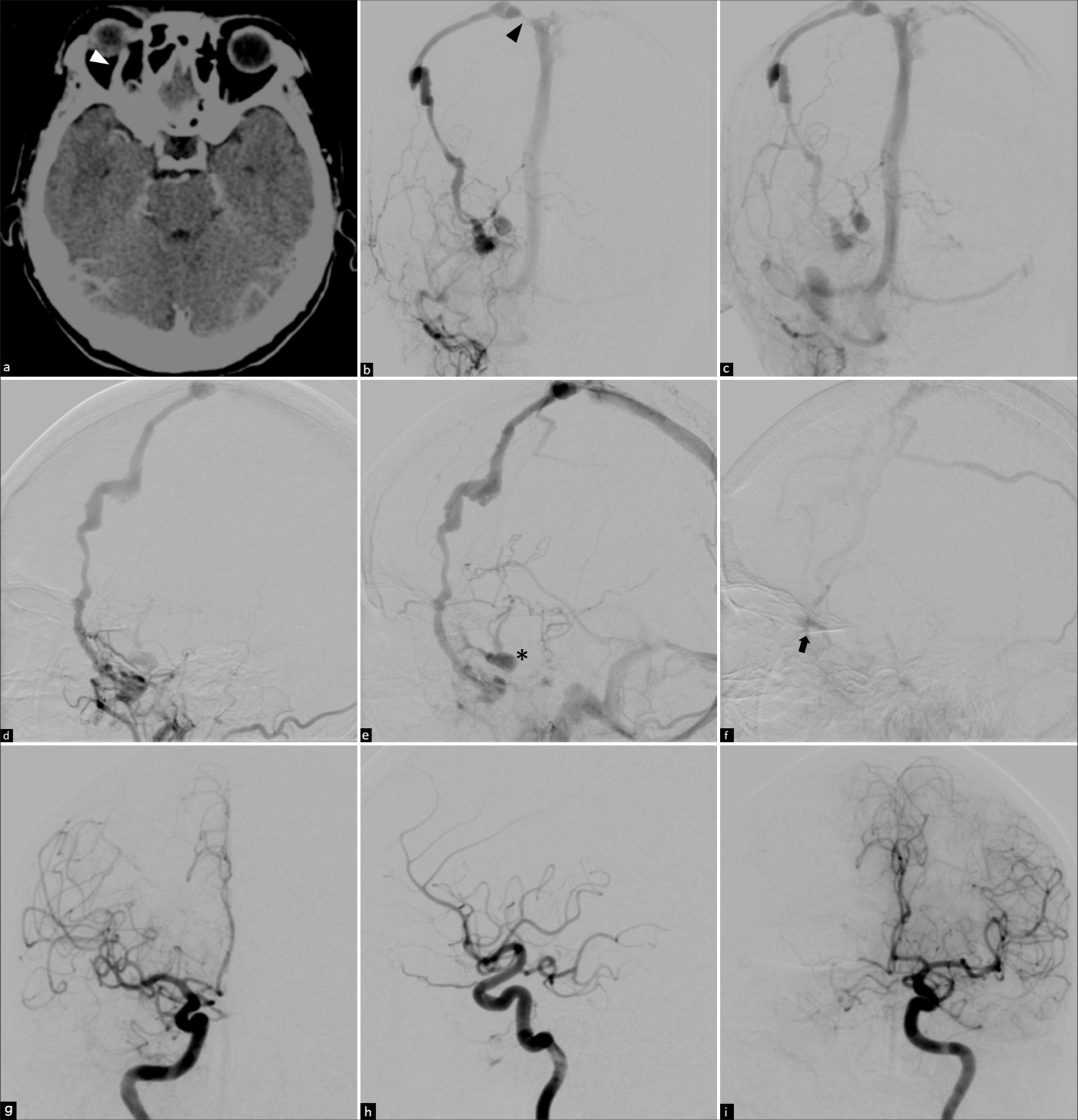A unique presentation of an osteolytic chronic lymphocytic leukemia/small lymphocytic lymphoma as a helmet-shaped tumor
Date of publication: 28-Mar-2025
BackgroundCranial vault lymphomas (CVLs) are rare skull lesions, mostly caused by diffuse large B-cell lymphoma, a subtype of non-Hodgkin lymphoma (NHL). Chronic lymphocytic leukemia/small lymphocytic lymphoma (CLL/SLL) extremely rarely causes cranial vault lesions. Herein, we report a case of a CLL/SLL causing a unique and extensive cranial vault lesion with a striking presentation of a helmet-shaped tumor, whose treatment with ibrutinib led to full bone regeneration.
Fall at mountain hiking resulting in acute rupture of traumatic posterior inferior cerebellar artery aneurysm and hypoglossal nerve palsy
Date of publication: 28-Mar-2025
BackgroundTraumatic posterior inferior cerebellar artery (PICA) aneurysms are rare. Fractures of the occipital condyles (OCs) have been reported to cause delayed hypoglossal nerve (HN) palsy possibly.
Cognitive impairment associated with suprasellar cavernous malformation: A case report and review of the literature
Date of publication: 28-Mar-2025
BackgroundCavernous malformations (CMs) are benign vascular anomalies that most commonly occur in intra-axial locations but rarely develop in the suprasellar region. Suprasellar CMs pose unique diagnostic and therapeutic challenges due to their proximity to critical neurovascular structures, such as the optic chiasm, pituitary stalk, and hypothalamus. Although visual disturbances and headaches are typical symptoms of suprasellar CMs, cognitive impairment, especially memory loss, has rarely been reported.
A case of endoscopic endonasal surgery for a tuberculum sellae meningioma resected in the third trimester of pregnancy
Date of publication: 28-Mar-2025
BackgroundMeningiomas are known to be able to grow rapidly during pregnancy. Moreover, tuberculum sellae meningiomas present with progressive visual dysfunction and occasionally require immediate surgical intervention. Here, we report on the intraoperative and perioperative management of a patient with a tuberculum sellae meningioma who underwent endoscopic endonasal surgery (EES) in the third trimester of pregnancy.
Clinical and radiological profie changes of patients undergoing carotid endarterectomy over 40 years
Date of publication: 28-Mar-2025
BackgroundThis study aimed to explore how clinical and radiological profiles of patients undergoing carotid endarterectomy (CEA) have changed over the past 40 years.
Timing of cerebrospinal fluid diversion with ventriculoperitoneal shunt placement in cranioplasty reconstruction: A systematic review and meta-analysis
Date of publication: 28-Mar-2025
BackgroundA substantial proportion of patients who undergo decompressive craniectomy develop hydrocephalus (HCP), necessitating both cranioplasty (CP) and cerebrospinal fluid (CSF) shunting procedures. There is wide variation in the timing and sequence of these operations. We aim to define the complication rates and types of each treatment algorithm in patients requiring both CP and CSF shunting in an effort to identify the optimal sequence of procedures.
Reproducible occurrence of hiccups during resection of a large pontine cavernous malformation
Date of publication: 28-Mar-2025
BackgroundVarious brainstem pathologies cause hiccups.
Multiport combined endoscopic endonasal and transorbital approach to orbital schwannoma
Date of publication: 21-Mar-2025
BackgroundWe present a case report describing the use of combined endoscopic endonasal and transorbital approach (EETOA) for intraorbital schwannoma that grew rapidly during pregnancy.
Operative considerations for resection of pituitary adenoma in patients with sickle cell disease: A retrospective analysis of 19,653 patients
Date of publication: 21-Mar-2025
BackgroundSickle cell disease (SCD) is a hemoglobinopathy that affects over 30 million individuals worldwide. When significant “sickling” occurs, blood flow to specific organs can be impaired, resulting in ischemia or infarction. This can be problematic during intracranial surgery, in which low systemic circulatory volume due to significant blood loss can lead to intracranial hypotension. Using a multivariable modeling approach, we gathered a large patient dataset through a nationally representative database to inform future neurosurgical management of patients with concurrent SCD and pituitary adenoma.
Spontaneous obliteration of a greater sphenoid wing dural arteriovenous fistula involving the diploic venous system
Date of publication: 21-Mar-2025
BackgroundSphenoid wing dural arteriovenous fistulas (DAVFs) are rare vascular anomalies caused by abnormal arteriovenous shunting near the sphenoid bone. They are associated with significant risks, including cortical venous reflux and intracranial hemorrhage, especially when involving high-risk drainage pathways. Spontaneous regression of high-flow sphenoid wing DAVFs is exceedingly rare and has not been previously documented.



